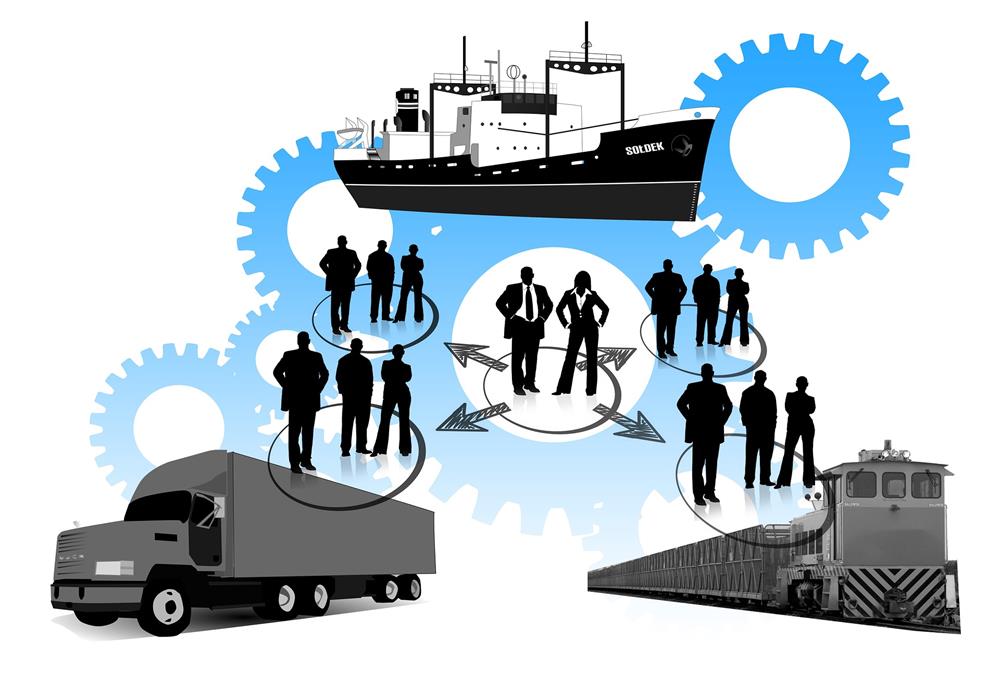- Home
- Business Processes
- Industry Knowledge
- Aerospace Industry
- Automotive Industry
- Banking Domain
- BFSI Industry
- Consumer/ FMCG Industry
- Chemicals Industry
- Engineering & Construction
- Energy Industry
- Education Domain
- Finance Domain
- Hospitality Domain
- Healthcare Industry
- Insurance Domain
- Retail Industry
- Travel and Tourism Domain
- Telecom Industry
- Leadership Skills
- eLearning
- Home
- Functional
- Order to Cash
- Cross Docking Process
Cross Docking Process
One of the warehousing best practices that retailers like Walmart, Amazon, and Target have adopted is known as cross-docking. During this process the inbound products are unloaded at a distribution center and then sorted by destination, and eventually reloaded onto outbound trucks. In real parlance, the goods are not at all warehoused but just moved across the dock (hence the name).
Cross-dock products from receiving warehouse to stores
One of the warehousing best practices that retailers like Walmart, Amazon, and Target have adopted is known as cross-docking. During this process the inbound products are unloaded at a distribution center and then sorted by destination, and eventually reloaded onto outbound trucks. In real parlance, the goods are not at all warehoused but just moved across the dock (hence the name).
Cross-dock is the process to distribute products from the receiving location of a purchase order to one or many stores. Cross docking takes place in a distribution docking terminal; usually consisting of trucks and dock doors on two (inbound and outbound) sides with minimal storage space. Cross docking can also be defined as the process of re- handling freight from inbound trucks and loading it into outbound vehicles. Essentially, cross-docking removes the “storage” link of the supply chain. Cross-docking is a practice in logistics of unloading materials from a manufacturer or mode of transportation directly to the customer or another mode of transportation, with little or no storage in between.
The receipt of products may be from multiple vendors and they are sorted in the receiving warehouse and dispatched in outbound trucks for a number of retail stores. Organization must specify the quantity being purchased of the selected product that should be distributed and orders are created from the receiving warehouse to the retail stores.
Factors influencing cross docking:
- Cross-docking requires continuous communication between suppliers, distribution centers, and final points of sale
- Useful when a single corporate customer has many multiple branches or using points
- Helps in reduction of freight costs, cost of inventory in transit and complexity of loads
Cross Docking Process:
Given below are the steps involved in designing a cross docking process:
- There are three parties involved in this process - Manufacturer of Originating Supplier, Supplier who has received the order from the customer.
- The originating supplier ships the goods.
- The supplier is notified of the shipping details.
- Carrier notifies middle supplier of the arrival date and time for each shipment.
- The supplier also receives the order details from the customer.
- The outbound carrier is notified of the pick-up time, load description, destination, and delivery date and time.
- The customer is notified of shipment detail, carrier, and arrival date and time.
- A dock location is selected for trucks involved in receiving and shipping.
- Labor and handling equipment are scheduled.
- Receipts are recorded and reconciled, and any receiving variances are noted.
- Labels are created, and cases and pallets are routed and tracked from receiving to dispatch.
Example:
This method was used by Wal-Mart in the 1980s. Wal-Mart was able to effectively leverage its logistical volume into a core strategic competency by usage of cross docking.
- Wal-Mart operates an extensive satellite network of distribution centers serviced by company-owned trucks
- They have two types of products, items for regular sales (staple stock) and large quantities of one time products
- Cross docking is used for second type of products
- It minimizes warehouse costs with direct freight by keeping these products in warehouse for as little time as possible.

Milk Run Process
A Milk Run is a delivery method used to transport mixed loads from various suppliers to one customer.
This method got its name from the dairy industry practice, where one tanker used to collect milk from several dairy farms for delivery to a milk processing company. The milk-run is generally an “in-warehouse” transportation system where your items are transported from a central or receiving area to different putaway areas within your facility. In the context of logistics, milk runs helps to increase the utilization of tools and in-turn reduce the logistics costs.
Examples:
- Some retail product quantities typically aren't full pallets of inventory. Milk-run strategy could be deployed for Putaway activity.
- One truck can visit multiple suppliers to pick up the loads for one customer.
Related Links
You May Also Like
-
Warehouses can be places where piles of packed or loose products occupy space. If left disorganized, it will become very challenging to identify products for packing or picking. Hence, proper organization of warehouse is very important. Warehouse labeling systems eliminate this problem by making sure products are easily identified and managed during the warehousing and shipping process. Labeling is the most functional and cost-effective way to keep your warehouse organized and operating efficiently.
-
Inventory is money, and hence businesses need to perform physical inventory counts periodically to make sure that their inventory records are accurate. The traditional approach to conducting inventory counts is to shut down a facility during a slow time of year to count everything, one item at a time. This process is slow, expensive, and (unfortunately) not very accurate.
-
When a customer wants a product that has been stored in the warehouse, the same need to be picked off the shelf (or off the floor) and get it ready for shipping. Depending on how big is the warehouse, picking can take a while. (Many distribution centers cover more than 1 million square feet.). Hence, warehouse order picking methods are an important aspect within any warehouse.
-
Before shipping, businesses need to make sure that the items will arrive in good condition. Packaging is a form of protection against environmental threats that the product will face from the time it leaves warehouse facility until the time it reached the customer. The packaging is intended to provide protection for the item as it is being handled in the warehouse or when the item is being shipped.
-
Types of Inventory Count Processes
While dealing with lots of inventory in a warehouse, lots of things can go wrong. Shipments may not have the right number of units in them, or they could get damaged somewhere along the supply chain. Discrepancies in the stock may arise as part of every inventory control, and need to be corrected immediately after the inventory control procedure has been finished.
-
To stay competitive in today’s tough market, the location of your warehouse is vital. To grow retail business need to offer to customers faster and affordable shipping time, which is dependent on the warehousing location as the location of the warehouse affects the transit time to ship orders to customers.
-
Transport operations are often divided into full load and part load and due to economies of scale, the unit costs are higher for part loads. Our customer needs several part loads delivering, so it can reduce costs by consolidating these into full loads. Then it gets all the part loads delivered to a warehouse near the suppliers, consolidates them into full loads, and pays the lower costs of full-load transport to its operations.
-
Warehouse management and distribution logistics involve the physical warehouse where products are stored, as well as the receipt and movement of goods takes place. Warehouse management aims to control the storage and movement of products and materials within a warehouse. These operations include the receipting of inwards goods, tracking, stacking and stock movement through the warehouse.
-
Business Case of Multiple Warehouses
Adding extra warehouses to business provides many benefits such as reducing shipping costs, increasing storage capacity, and having warehouses for specific purposes to simplify overall warehouse management. Multiple warehouses allow you to organize your inventory in a way that helps your business be more effective.
-
When products arrive at a facility, there need to be a defined process to let them in. The process for accepting inventory when it arrives is called "Receiving". Any warehousing operation must be able to receive inventory or freight from trucks at loading docks and then stow them away in a storage location. Receiving often involves scheduling appointments for deliveries to occur, along with unloading the goods and performing a quality inspection.
Explore Our Free Training Articles or
Sign Up to Start With Our eLearning Courses

About Us
Learning
© 2023 TechnoFunc, All Rights Reserved








